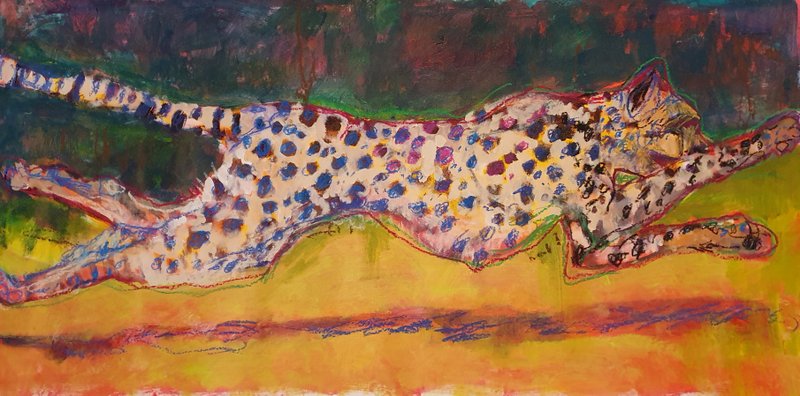JOYEUSE Blair Pessemier Acrylic on wood 4 x 20 inches
Last week a friend went to the “Epees” (sword) show at the Cluny museum. “Did they have Joan of Arc’s sword?” I quipped, thinking it unlikely. “Yes, they did!” Not only that, but Roland’s sword “Durandal”, Charlemagne’s “Joyeuse”, and el Cid’s “Colada”. Blair and I had to go see for ourselves.
Cluny, the National Museum of the Middle Ages, was the only major museum in Paris we hadn’t visited. I just never got around to it, and most guests prefer the Musee d’Orsay or a blockbuster Impressionists’ show. We arrived too late on Friday, so we went on Saturday at noon: no line.
Cluny is actually the “northern thermal baths” of Lutetia, a gallo-roman site (the only significant one) in Paris. They were constructed in the 1st century – and used for two more centuries. It’s pretty breathtaking when one enters the “frigidarium”, where the Sword Show was staged. People in odd shaped shoes (we saw them, the shoes, that is) were walking there 2000 years before me. The building itself was older than any sword in the collection – including the hilt of Clovis’s father, Childeric’s sword. It was this sword that defeated the Gauls and “made” France.
Swords are as much mythical and symbolic as they were useful. People named their swords and attributed them with magical powers. Some could fly, and everyone remembers the mystery of Excalibur. I was surprised at the size of some of the swords: Joyeuse, Charlemagne’s sword, must be three feet long (Blair says 40 inches – officially it is 38.54 inches) – one can see it in the portraits of King Louis XIV, XV and XVI. Joan of Arc’s sword had a smaller grip, and was double edged – she brandishes it in her famous equestrian statue. The show included the skull of someone who’d recuperated from several sword blows to the head before their death. There were guides to how to wield a sword, and you could actually handle a sword: I thought it was heavy, but Blair was impressed with how easy it seemed to use.
In a word, it was a very stimulating show. And I got to see the Unicorn tapestries and all the marvelous portable arts of the Middle Ages. It is a favorite period in art history – with so many rich crafts (okay, not everybody wants a reliquary, but I think how neat they are to carry/house things – a place to store chili peppers, for example). There were ivory treasures and silver pieces; crowns and column capitals. As we left young boys were climbing into the well in the courtyard.
We’ve had a hard time getting back into the swing of life in Paris since the summer. We’ve had many distractions, and finding time to paint has been difficult: it’s not that we don’t have free hours, but there is a mental “open road” one needs to achieve before launching creativity.
The sword show, and more importantly, the Cluny museum put me into the mind of making things again. It’s our chance at immortality.

